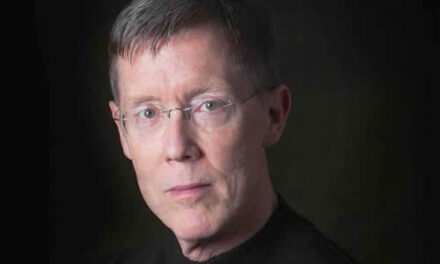Talk about exploring piano literature that is seldom performed! The second of three concerts at UNCG’s Focus on Piano Literature Symposium, “Paris in the 1920s” (June 5-7), featured a miscellany of compositions. I may have heard the name of almost all the composers, but had only heard a couple of the compositions before, and never live. But isn’t that the point of such a conference?
Three of the composers of this unruly collection included half of the group known as Les Six — Germaine Tailleferre, Darius Milhaud, and Francis Poulenc — as well as others in the Parisian orbit.
Friday night’s program in the School of Music’s Recital Hall began with UNCG piano faculty member John Salmon playing a couple of fugues by Saint-Saëns (Nos. 3 and 5 from Op. 161, in G Major and G minor, respectively). These two conservative works provided the base line of traditionalism (reactionaryism?) by which the rest of the evening’s works would be compared. Not that the themes were particularly Bach-like, but the imitative entries certainly hearkened back to the German master. Salmon’s playing was crystalline and full of rhythmic energy.
A critic grouped Les Six together as avant-garde entity; there was, however, no common manifesto to which all the composers subscribed. Five of the six did, however, write a collection of music (Album des Six) from which Salmon played Tailleferre’s “Pastorale,” a bi-tonal trifle.
More substantial was former UNCG artist-in-residence Daniel Ericourt’s transcription of Ravel’s “Pièce en forme de Habanera.” Here Salmon conjured up the evocative Spanish dance in fine style.
Three compositions by Ericourt — “Mechanic,” “Fantaisie,” and “Pièce en forme de Rag” — concluded Salmon’s offerings of solo piano. The first was perpetual motion, the second, a virtuosic Debussy-like piece, and the final featured tone clusters and bi-tonal melodies. Ericourt would certainly have been pleased with Salmon’s brilliant performance.
UNCG piano professor Andrew Willis continued the rag idea with Stravinsky’s take on the popular jazz form in “Piano-Rag-music.” The pianist caught the quirky, disconnected character of the piece. Two Mazurkas (Nos. 3 and 4 from Op. 50) by Karol Symanowski explored a different dance form. Although both were based on Polish folk-like tunes, the overall texture was clearly Parisian urbane.
Brilliant pianism is required in Bohuslav Martinu’s Czech Dance No. 3 (Polka), a work that clearly showed Willis’ formidable technique. Francis Poulenc’s Nocturne No. 1 is more lounge/cabaret style, which the pianist delivered with suave sophistication.
Salmon’s and Willis’ program notes were almost as much fun as listening to their playing.
French songs by André Caplet, Albert Roussel, and Jacques Leguerney rounded out the first half of the program. Soprano Hope Koehler and pianist James Douglass made a strong case that these composers need to be heard more frequently. Koehler’s voice is beautifully lyric but with drama when needed. Her vibrato is pleasing, and her lower range is especially lovely. Douglass’ accompaniment was full of color and moved freely with exquisite flexibility.
Darius Milhaud’s Le Boeuf sur le toit, Op. 58 (English title: The Ox on the Roof: The Nothing-Doing Bar) is a surrealist ballet strongly influenced by Brazilian popular music. Students from the Departments of Dance and Theatre enacted this over-the-top farce that featured a pink-toupeed bartender, a couple of thugs, prostitutes, and a policeman who has his head knocked off by one of the thugs. (Don’t worry; the head is put back on by the end.) At the keyboard were Salmon and Willis, playing like the boys in the band, and wonderfully entertaining.
Focus concludes Saturday night with a concert by guest artist Jerome Lowenthal performing solo piano works by Poulenc, Stravinsky, Milhaud, Fauré, and Ravel.











